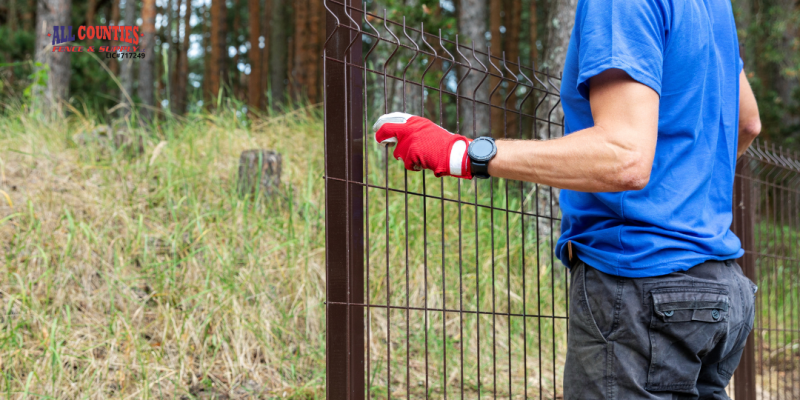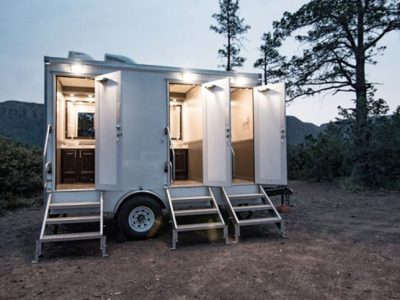When people type fence installation near me into a search bar, they want the job done once and done right. The part that trips most homeowners is not the panels or the posts. It is the ground rules. Boundaries, surveys, and site checks decide how smooth your project runs. I have installed fences for a long time. I have seen the same avoidable mistakes repeat. In this guide I explain how to avoid them, so your new fence lasts and you keep good neighbour relations. If you want a simple starting point, see our page on fencing near me for a quick overview of local options and what to expect.
Why surveys and boundaries matter
A fence marks a line. That line carries cost, duty, and future upkeep. If you set a fence on the wrong line, you invite conflict. If you sink posts over a drain or cable, you risk damage and delay. If you choose the wrong height, you face a tear down. Getting the basics right saves time and money. It also keeps you on the right side of planning rules.
Title plans vs what you see on the ground
Paper records help. They do not tell the whole story. Title plans show general boundaries. The lines on a plan are not exact to the centimetre. Over years, hedges creep. Old fences get replaced. Garden features move the eye. When I arrive on site, I compare three things:
- What the paperwork shows.
- What the existing markers show.
- What both neighbours believe is correct.
If those three agree, great. If not, we slow down and sort it. Rushing the layout only stores up work for later.
Who owns which fence
There is a common myth that you own the fence on your left or your right. In truth, it varies. Some homes maintain one side. Some share. Some deeds have a clear T mark that shows who maintains a boundary. Some do not. If nothing in writing exists, I advise a simple test. Ask both parties who has fixed or replaced that fence in the past. Past duty often guides future duty. If the answer is still unclear, plan a shared solution. A solid plan keeps the project moving and keeps both sides happy.
When a boundary is shared
Many fences sit on the line between plots. In that case, both sides have a stake in the work. You can still press on with a smart, fair plan. Agree on height, style, and access at the start. Write it down in plain words. Share a sketch. Keep a record of messages. These simple steps stop small issues turning into big ones.
Height rules you should know
Most homes in England can fit a fence up to 2 metres in the back garden without planning permission. If your fence borders a road used by traffic, the limit is often 1 metre. If your old fence already stands higher by right, you may keep that height. If a covenant limits your fence, you must follow it. If in doubt, check with your local council before you order materials. A quick check costs less than a rework.
Finding the exact line
If a hedge marks the boundary, decide where the new fence sits. You can place the fence on your side of the hedge, remove the hedge and replace it with a fence, or keep both. If you place a fence against a hedge, allow space for future growth and maintenance. If an old fence leans or wanders, do not copy its errors. Measure from fixed points you both accept. A garage wall or a corner pin often works well. Drop a string line to guide the posts. Make sure both parties can see and approve that line before we dig.
Watch for shared features
Sheds, patios, raised beds, and play areas often sit close to the boundary. If a new fence will make doors hard to open, plan a narrower gate or a different swing. If a neighbour has a shed over the line, do not try to fix a survey issue with a saw. Pause and agree a compromise. A fence should end disputes, not start one.
Slopes, steps, and retaining walls
Sloped gardens add risk if you do not plan. You can step panels or you can rake them. Stepped fences look neat with standard panels but leave gaps under each step. Raked fences follow the ground so the bottom rail stays close to the soil. If a retaining wall holds soil on one side, never fix a post into the wall without knowing its structure. A fence post can add leverage to a wall and cause damage. The safe method is to set posts in the ground behind the wall or use a proper core drill and resin anchors designed for that substrate. I choose the method after I see the site and soil.
Underground services and safe digging
Most delays come from what we cannot see. Cables, water lines, gas pipes, and drainage runs are common near boundaries. Look for manhole covers, inspection caps, and utility boxes. Ask both neighbours where services enter the house. When I set out post positions, I offset to avoid known services. Hand digging near suspected services reduces risk. A careful start beats a fast repair.
Trees, roots, and hedges
Roots can push posts over time. Some trees are protected and should not be cut. I allow at least a post diameter plus 150 mm clear from major roots. If roots are dense, I switch to a smaller auger and a deeper hole, or I move the post position a small amount and adjust panel width with an infill. If you plan to remove a hedge, clear it before I order panels. Hedges hide level changes. Once the hedge is gone, we can see the true ground line and order the right panels and gravel boards.
Drainage, wind, and the right footing
Good fences fail when posts sit in weak ground. Clay holds water. Sand shifts. Heavy winds test both. I match the footing to the soil. In firm ground, a 600 mm to 750 mm depth works for a typical 1.8 m fence. In exposed sites, I go deeper. I use quality concrete or the right post mix. I bell out the bottom of the hole so the footing cannot lift. I use gravel boards to keep panels out of wet soil. Small details help your fence survive the first storm of winter.
Boundary set backs and access for maintenance
Sometimes the best move is to set the fence just inside your land. This is common where access to the far side is limited. A small set back lets you maintain your side without crossing the line. It also keeps the fence clear of old footings and drains that sit on the boundary. If you choose a set back, your neighbour must accept that the old fence line is now inside your garden. Mark and explain this before we start.
Gates and how they affect the boundary
A well placed gate makes a garden work. A badly placed gate hits bins, cars, or steps. When we set a gate on a boundary, we check three things. The swing path. The latch position. The drop from threshold to paving. On tight plots, a sliding bolt and a drop bolt on the inside of a double gate add security without large hardware that projects into a neighbour’s space. Getting the gate right avoids calls a month later about scraping or sticking.
A simple pre install checklist
Use this one page list before anyone digs a hole. It prevents 9 out of 10 issues I get asked to fix.
- Confirm the boundary line with your neighbour in writing. Sketch it.
- Check height rules for your plot. Pay attention near roads.
- Mark all visible services and look for covers and inspection points.
- Clear hedges and shrubs enough to see the ground.
- Decide on stepping or raking on slopes.
- Choose post type and footing depth for your soil and wind exposure.
- Decide who maintains which face and who pays for future repairs.
- Choose gate swing and latch side to avoid obstructions.
- Allow space for bins, access paths, and lawn tools.
- Order a few spare boards or a short infill panel to adjust widths.
Material choices and how they affect cost
Timber remains popular. It looks warm and natural. It is cost effective at the start. It needs basic care. Treat the timber at regular intervals. Keep soil away from boards. Replace broken caps. Small jobs now avoid large jobs later. Steel posts add strength and a smart look. They resist rot and can hold heavier panels. They cost more at the start, but they often reduce long term repair bills. Concrete posts with slotted panels are a tough choice for exposed sites. They take knocks and handle water well. Composite panels offer low upkeep and a clean, modern line. Composite fencing cost depends on height, board style, post type, and any upgrades like aluminium trims. If you price materials, compare like for like. Include caps, trims, fixings, and gravel boards. Also include disposal of old materials and site access. A cheap panel with poor fixings is not a bargain.
Panel types and where they fit best
Closeboard panels give privacy and strength. Good for windy sites. Lattice top panels give light and soften the look. Hit and miss panels reduce wind load because air can pass through. Good for exposed plots. Picket or palisade suits front gardens where you want a friendly street view. Trellis adds height without the full mass of a solid panel. You can use trellis on top of a lower solid section to meet height rules next to a road. Mix and match with care. Keep the design consistent along the run so it looks planned, not pieced together.
Fixings and finishes that add years
Stainless screws cost more than standard screws. They last longer and avoid rust marks. Galvanised fixings also work well. Use caps on posts to shed water. Use quality hinges that carry the full weight of the gate. Fit a drop bolt on double gates so the free leaf does not slam. Seal cut ends of treated timber with an end grain preservative. These small steps keep water out and protect fixings from movement.
Typical site issues I see every month
A gate path meets a drain cover. The fix is a small change in the hinge side so the gate clears the cover. A fence runs into a step. The fix is a short panel at a custom height that meets the top step cleanly. A neighbour has a raised bed along the boundary. The fix is a gravel board of the right height so soil does not sit against the panel. A tree root blocks a post hole. The fix is a slight offset and a custom width panel. None of these issues ruin a project if we spot them early.
Repair or replace
Storms create a spike in calls for fence repair near me. If only one or two posts fail, a repair makes sense. Replace the posts and reuse sound panels. If several posts lean or the panels rot, a full replacement is better value. We always check the run for hidden rot before we quote. It avoids a false saving. If the fence is over a decade old and several posts lean, prepare for more faults to appear soon. In that case, new posts and panels save repeat call outs.
Working with neighbours
Good fences make good neighbours when you talk first. Share your plan. Share your timeline. Offer to show the string line before we set posts. Keep noise and dust down as much as you can. Keep your side tidy each day. Agree how to deal with old materials that fall on the far side of the line. A fair approach builds trust and avoids small disputes that slow the work.
When to call the pros
DIY can work on simple straight runs in open access plots. Once you add slopes, shared walls, drains, trees, or tight access, a trained team saves time. A skilled crew will set out the line, set posts at the right depth, and handle heavy panels safely. If you are searching for fencing contractors near me, check for public liability insurance, clear itemised quotes, and photos of recent work. Ask how they deal with hidden issues like roots or old footings. Ask how they protect paving and property during the job. Be wary of anyone who skips site prep or wants to guess at the line.
Choosing the right partner for your location
Local knowledge matters. Soil, wind exposure, and estate layouts vary from street to street. If you are in West Yorkshire and want advice tailored to the area, our fence company near me page is a simple way to learn how we work and what to expect from first visit to final check. Local fencers near me understand the common pitfalls on your type of plot and can plan around them with less fuss.
Special cases you should plan for
Corner plots next to roads often have the 1 metre rule on the road side. We solve this by using lower panels with trellis above further back from the road line. Shared driveways need a clear line for vehicle doors and mirrors. We set posts back slightly so hinges and latches do not snag cars. New build estates can have strict covenants on fence style and colour. Read them. If you must match a style, order the right profile from the start to avoid delays. Listed buildings and conservation areas often need permission for changes. Check early.
Cost planning without guesswork
People often ask me about price. They also ask how to compare quotes from fencing contractors. A fair quote includes materials, labour, disposal of old materials, fuel for skips, and any access kit. It states panel type, post type, footing depth, and extras such as capping rails and gate hardware. It allows for small site tweaks like a cut down infill panel at one end. It avoids vague phrases that hide costs. If you want a realistic figure for your plot in Leeds and nearby, our fencing contractors page explains the service and how we scope each job on site.
Aftercare that keeps your fence strong
Once installed, a fence needs checks. Rinse off winter grime in spring. Trim plants that touch the panels. Oil hinges once a year. Check latches and bolts. Keep soil away from timber boards. Replace a cracked cap rather than leaving the post open. None of this takes long. It adds years to the life of your fence.
Clearing up common myths
You do not always own the left or right fence. There is no universal rule. Tall fences are not always better for privacy if wind exposure is high. A hit and miss design can give privacy and reduce stress on posts. Concrete posts are not the only strong option. Steel posts with the right fixings can be strong, slim, and smart. Composite is not maintenance free. It needs cleaning and proper fixings to perform well. Good design, good layout, and good fixings beat a single material choice every time.
Bringing it all together
If you want a smooth fence install, start with the ground rules. Confirm the line. Talk to your neighbour. Check height rules. Look for services. Plan for slopes and gates. Choose materials that fit your site and how you use the space. Then install with care. If you need help from a fencing contractor near me, look for calm, clear advice and a methodical plan. That is what turns a search for fencing companies near me into a fence you can rely on for years.














Comments